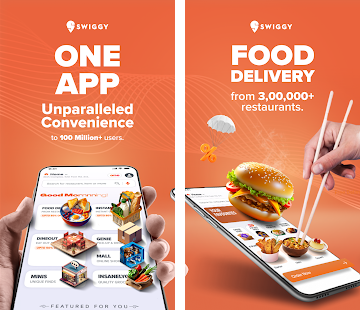Over the past ten years, we have observed an explosion of e-commerce and technology rapidly transforming the face of retail. One of the new disruptions is that within minutes, groceries, meals, or other staples will be delivered to our door through instant delivery apps. As these services gain popularity, the question remains: Could instant delivery apps potentially replace the need for traditional retail stores?
- The Appeal of Instant Delivery Apps
Instant delivery apps like Swiggy Instamart & Dunzo have started revolutionizing the way shoppers buy. One of the main aspects of these services is how fast and easy they can be used. With just a few taps on your smartphone, groceries are knocking on your door in most cases within an hour. Say goodbye to wasted time, where you wait in line for hours with some heavy grocery bags.
Additionally, the COVID-19 disaster forced the rapid adoption of these apps. The value of contactless delivery was also brought to the fore as lockdowns and social distancing measures made in-store shopping increasingly challenging for a large number of people. Ordering online for fast delivery had become a habit even after restrictions were partially lifted, pointing to what could be an enduring change in the way people used e-commerce.

- The Benefits and Challenges
Instant delivery apps like Flipkart Grocery and Swiggy Instamart offer several benefits. You can browse thousands of products, many from several stores, in one place, which provides more options than a single retailer. Some apps even offer recommendations based on past purchases, making the shopping experience enjoyable.
However, apps like food bazaar & Swiggy Instamart have some big issues to compete against. Although with the rapid delivery and all, customers still miss the in-hand feel of judging & buying a product, which sometimes questions the freshness of products.
Providing rapid order fulfillment by way of a super-supply chain comes with its own cost. This has led to ethical issues associated with labour practices, as the work still involves a large number of couriers carrying out their duties under tight deadlines and for lower wages. Furthermore, the environmental punch of more deliveries in smaller quantities should not be underestimated, as they all contribute to extra traffic and emissions.
The Role of Traditional Retail
Traditional Retail Stores also provide several benefits that instant delivery apps are unable to offer. Offline stores really do offer an experience that appeals to many shoppers. Some customers want the opportunity to test and see products before buying, whether it’s fruit delivery or daily grocery delivery. One more thing: You get that excited-ness of instant gratification as you have it in your hand the day of rather than waiting for delivery.
Online and offline shopping experiences have merged as retailers likewise evolve with changing consumer preferences. Most have either store pickup or click-and-collect, like grocery shopping—consumers order and pay for their purchases online and then go to the store for local pickup, adding digital speed with traditional immediacy.
In addition, traditional retailers may already have pre-existing relationships with suppliers, which allow them to sell more things at a better price. These assets, which many physical retailers have accrued over decades, are difficult for new entrants in the instant delivery market to replicate.
The Future: Coexistence Rather Than Replacement
The future likely isn’t a full replacement for traditional retail or a direct-to-consumer model, but rather somewhere in between. We expect to see these instant delivery apps expanding, particularly in cities where the pace of life and density of population make the most feasible. Like pop-ups of the future, they will meet particular shop and meal requirements at the last moment, as opposed to replacing traditional retail.
Instant delivery apps have revolutionized the groceries india sector in terms of convenience and speed. Still, some benefits of traditional retail, such as the check-before-buy and existing relationships with suppliers, help make it relevant since we are human. In all likelihood, retail in the future will be a mix of both, with each catering to specific consumer needs and preferences.
No Responses